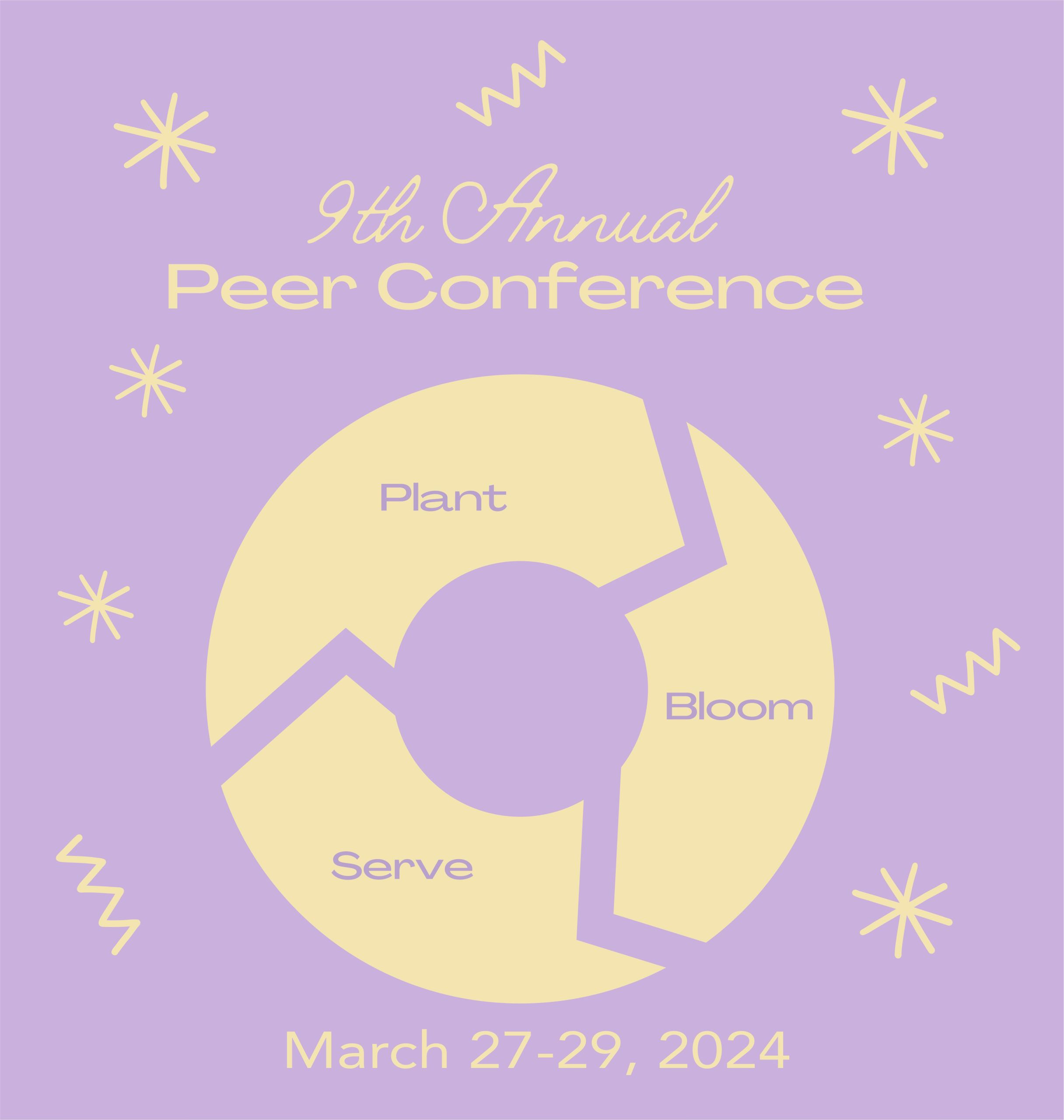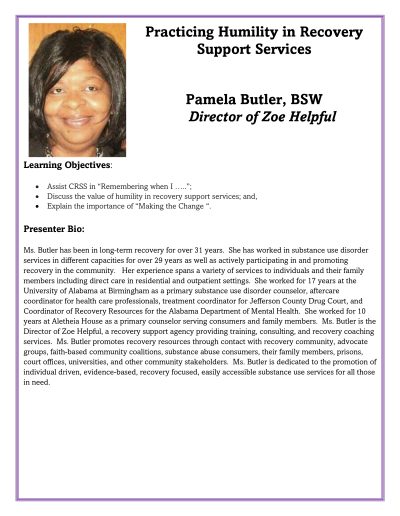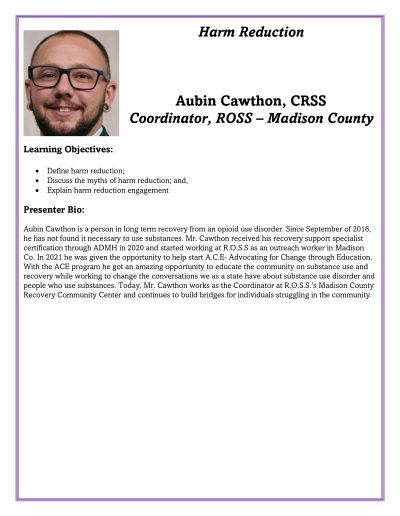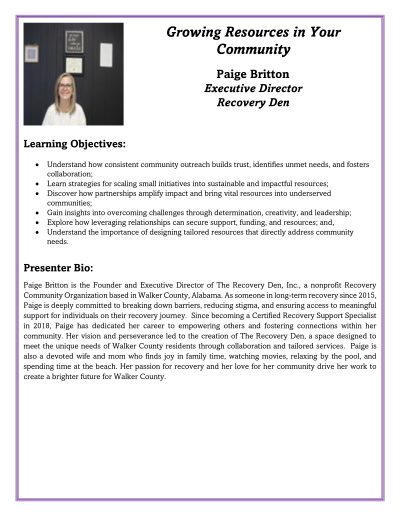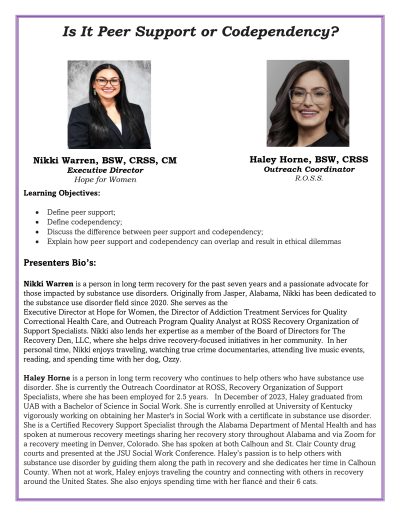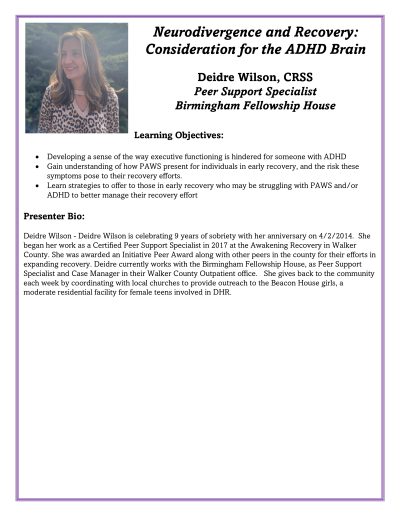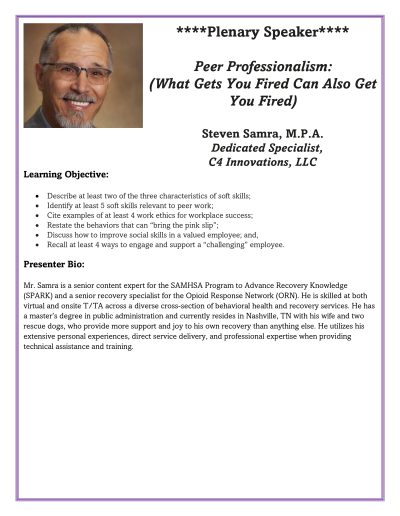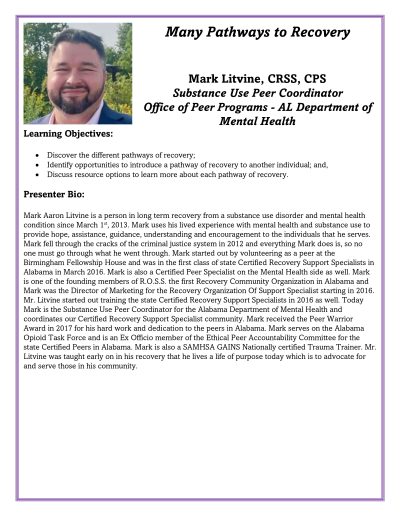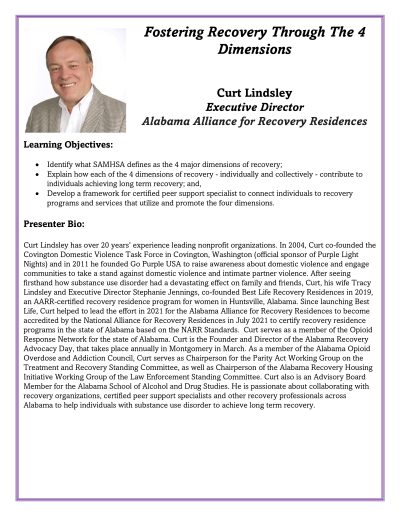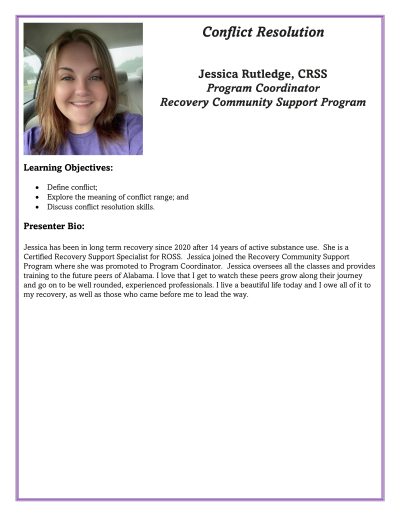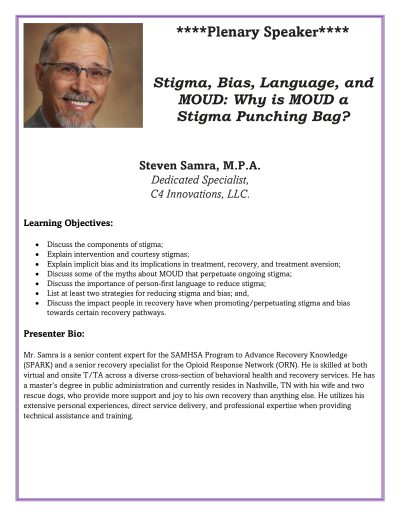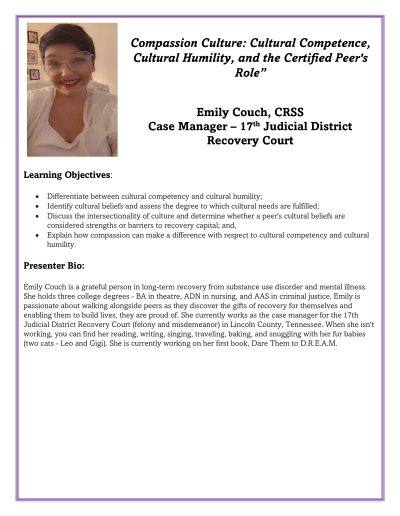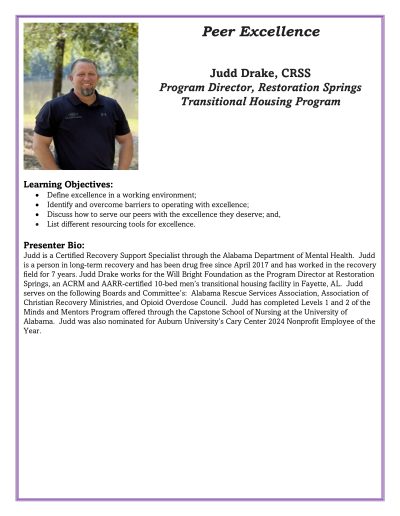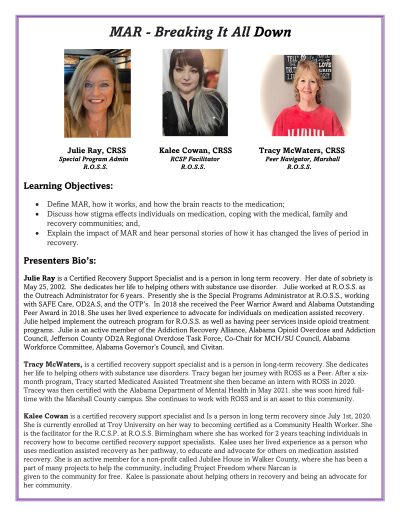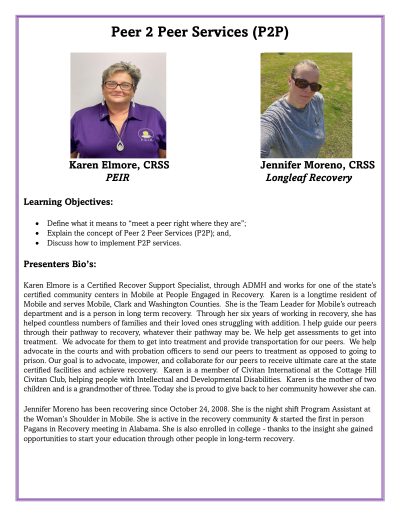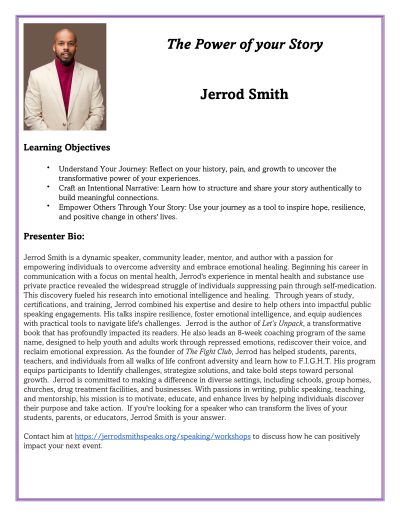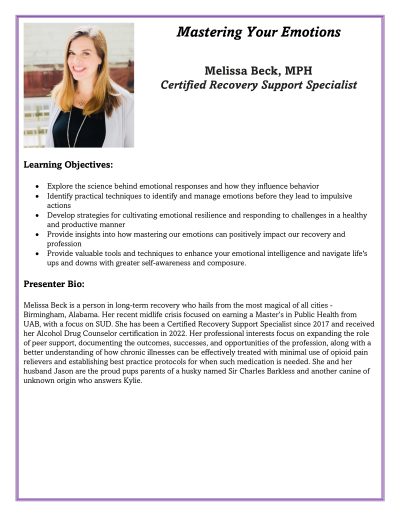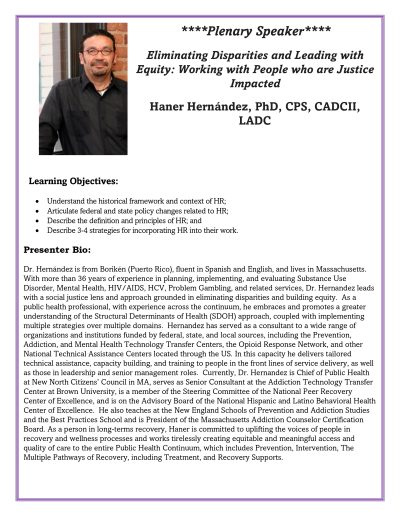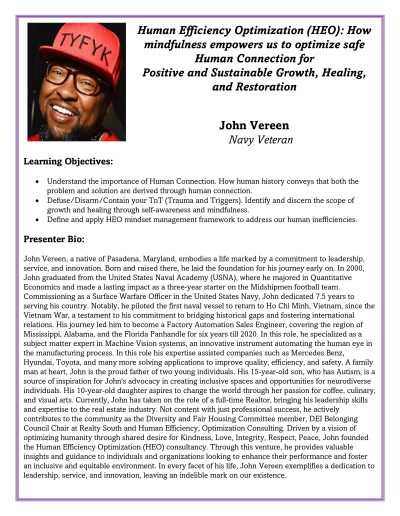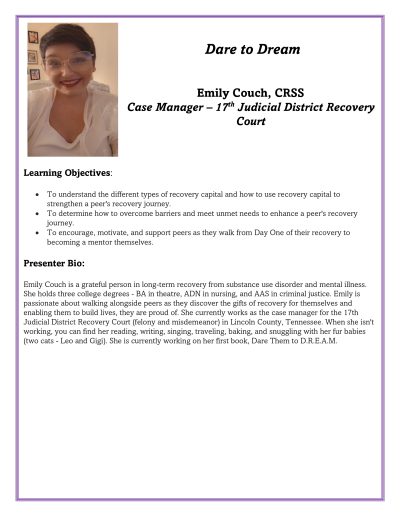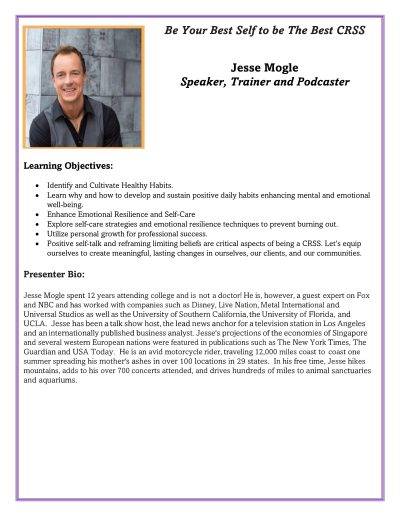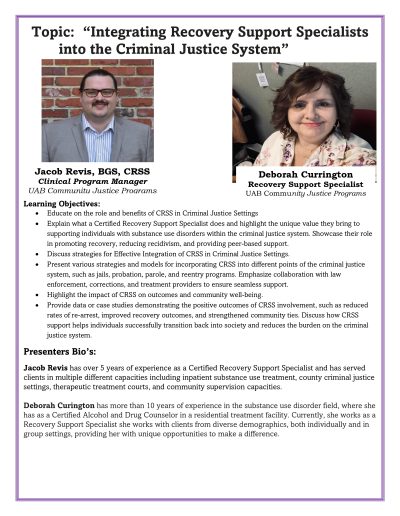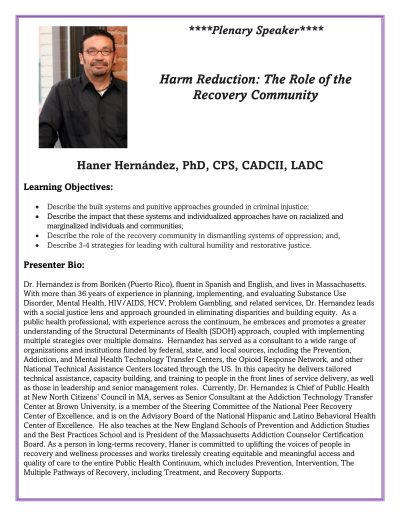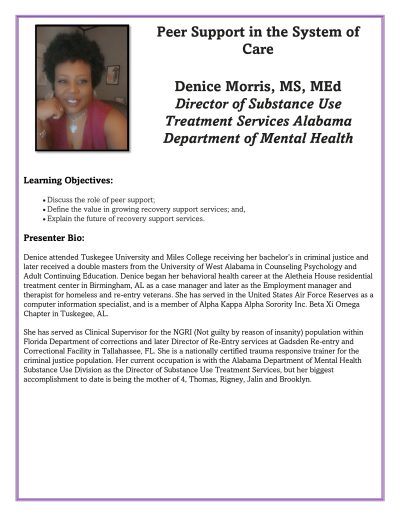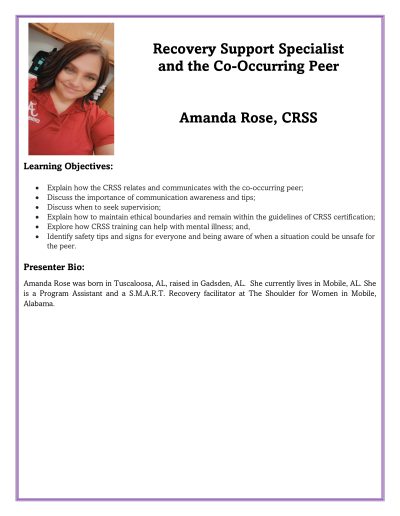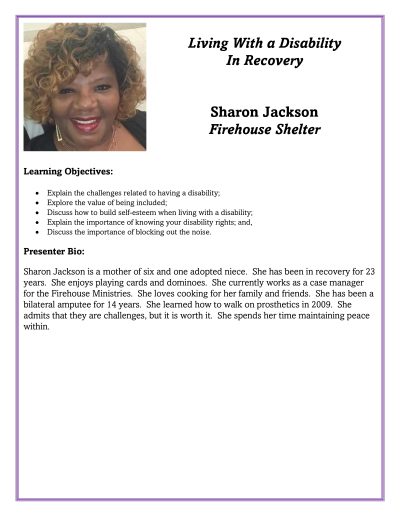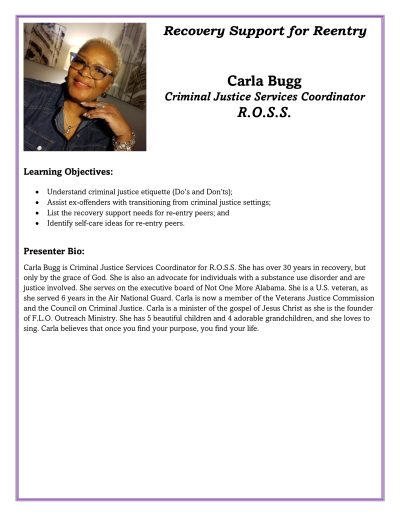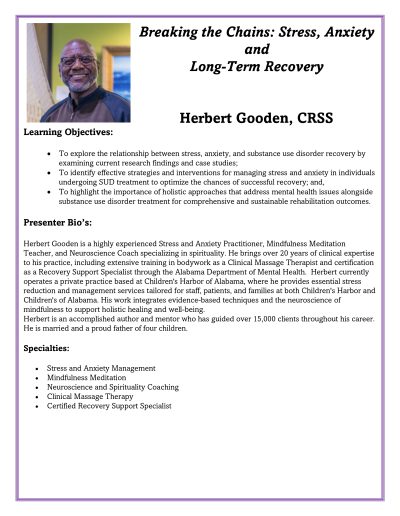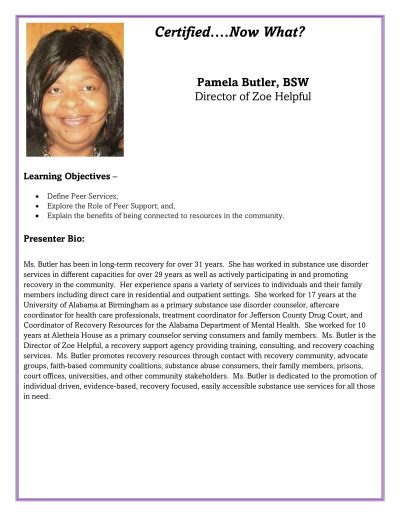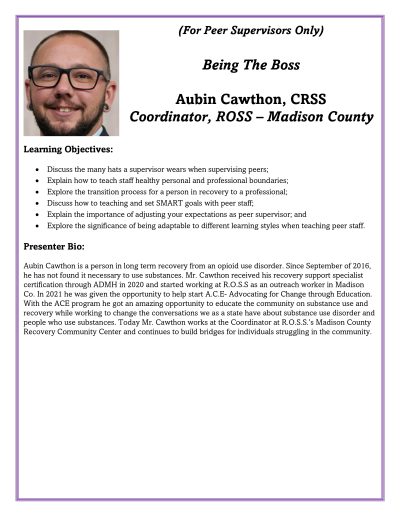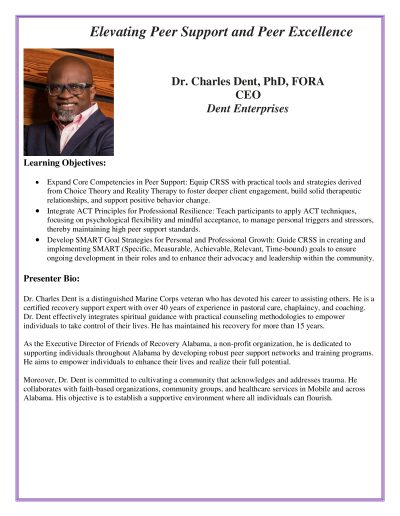Conference Presentations

2025 Peer Conference Presentations
Below is a list of topics that we covered during the conference.
Wednesday DAY 01
-
Integrating Peers into The Criminal Justice System
-
Be Your Best Self to be the Best CRSS
-
Dare To Dream
-
HEO
-
Mastering Your Emotions
-
Elevating Peer Support & Peer Excellence
-
The Power of Your Story
-
Peer 2 Peer (P2P)
-
Being the Boss (Peer Supervisors Only)
-
MAR Breaking It All
-
Peer Excellence
-
Compassion Culture: Cultural Competence, Cultural Humility, and the Certified Peer’s Role
Thursday DAY 02
-
Certified Now What
-
Conflict Resolution
-
Fostering Recovery Through the 4 Dimensions
-
Many Pathways to Recovery
-
Neurodivergence and Recovery: Considerations for The ADHD Brain
-
Breaking the Chains: Stress, Anxiety and Long-Term Recovery
-
Recovery Support for Re-Entry
-
Is It Peer Support or Codependency?
-
Living with A Disability In Recovery
-
Growing Resources In Your Community
-
Harm Reduction
-
Peer Support or Codependency
Friday DAY 03
-
CRSS Code of Ethics
-
CRSS Role in the System of Care
-
Practicing Humility in Recovery Support Services
